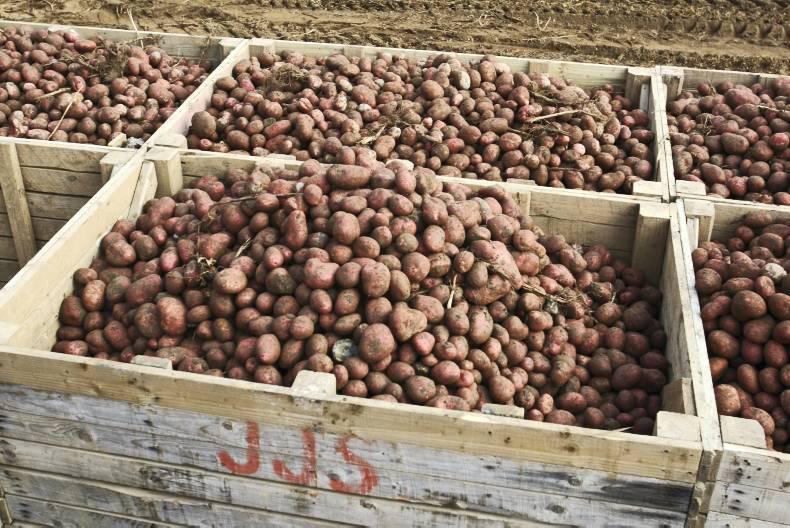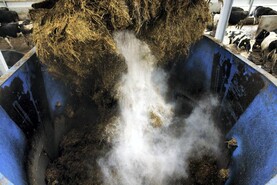After a few bad years for the potato industry, we’re back into positive territory.
According to data from Kantar Worldpanel, presented at the National Potato Conference in Dublin on Tuesday, 2015 saw growth in terms of both value and volume in the potato market for the first time since 2008. Value was up 14% in 2015 and volume was up 6.5%.
While there have been increases in volume and value over the past seven years, the two have not grown simultaneously until last year. Frequency of purchase has also recovered, with shoppers making 34 trips a year to buy potatoes in 2015, up from 32 trips in 2014 and the major low of 31 trips in 2011.
Discount stores
Interestingly, discount stores like Aldi and Lidl are managing to get people to buy more potatoes than their more established rivals Tesco, SuperValu and Dunnes Stores.
According to Cliona Lynch of Kantar Worldpanel, this mainly has to do with the fact that they had a smaller sales base to begin with.
“So there is a lot of growth potential with Aldi and Lidl,” she said. “Those stores still under-trade in potatoes, while the bigger retailers like Tesco and SuperValu are stronger and they’ve got a lot to lose. So Aldi and Lidl are really snapping at their heels to try and gain sales.”
Listen to an interview with Cliona Lynch of Kantar Worldpanel and Lorcan Bourke, potato sector manager with Bord Bia, in our podcast below:
Marketing campaign
Last September, Bord Bia, in conjunction with the Irish Farmers’ Association (IFA) and the Irish Potato Federation, embarked on an EU and industry funded three-year promotional campaign for potatoes in Ireland and the UK.
The campaign, Potatoes: More Than A Bit On The Side, worth €1m in Ireland, aims to raise the image and profile of potatoes, which have seen falling consumption levels in recent years.
Bord Bia estimates there has been a 50% decrease in volume per household over the last decade.
The campaign is specifically targeted towards 22- to 44-year-old females, 33% of whom said in a survey that they believe potatoes to be “fattening”.
Lorcan Bourke, potato sector manager with Bord Bia, says it is important to be able to target these types of consumers and transmit the message to them that potatoes are a staple in a healthy and balanced diet.
“We want the campaign to show people that potatoes are a fun food that is versatile, easy to prepare and healthy," said Bourke. "Potatoes are naturally fat- and gluten-free. That’s the message we want to get across and farmers can help transmit that message by shouting about the nutritional benefits of potatoes to anyone who'll listen."
The three-year campaign aims to grow the retail potato market by 28,000 tons, increase the frequency of potato purchase by 6% and increase the health perceptions of potatoes by 8% with consumers.
The strategy is driven by the character ‘Bud’, a friendly potato who has his own TV commercial (below), wears sunglasses and who, according to Bourke, has a fondness for jazz music.
“Bud and the healthy recipes he promotes are the real heroes of the campaign,” Bourke added.
So far, consumers have responded positively to the initial burst of marketing activity last year. Some 55% of people surveyed on the campaign said they now believe potatoes can be used in more recipes than originally thought, 39% said they would eat more potatoes and 57% said the campaign prompted them to try new recipes with potatoes.
Value of potato industry
IFA national chair Jer Bergin welcomed the marketing initiative, which is funded by growers, packers and the Department of Agriculture, saying: “This investment by growers is important for their future and must deliver a greater market return for potato producers. The potato industry is worth nearly €80m at farm gate. This year growers have experienced a better year, but only relative to the disastrous prices of the previous two.”
There are 500 potato growers in Ireland, with total area of production covering 20,692 acres (8,374ha) in 2015. The most popular variety is Roosters (almost six in 10 potatoes planted and purchased in Ireland are Roosters) and the key production counties are Meath, Dublin, Louth, Wexford, Cork and Donegal.






 This is a subscriber-only article
This is a subscriber-only article









SHARING OPTIONS: